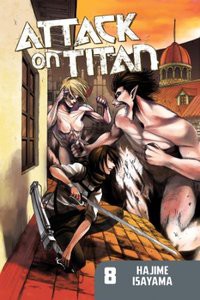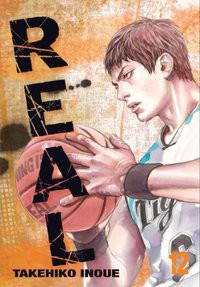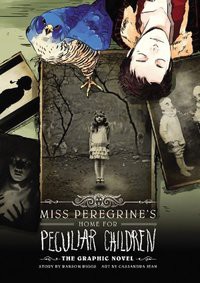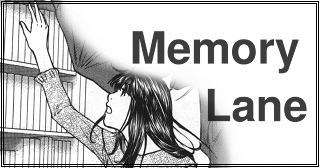RIGHT TURN ONLY!!
When Titans Attack
by Carlo Santos,

So now Crunchyroll is getting into the digital manga game. And they're going about it the smart way, offering big-name titles that people are interested in and going day-and-date with releases. What next—video games? Whatever it takes to keep fans glued to the site...
ATTACK ON TITAN

Vol. 8
(by Hajime Isayama, Kodansha Comics, $10.99)
FROM THE BACK COVER:
"The expedition outside the wall was Eren's chance to prove himself. But it failed, and the female Titan is free once more! With his squad dead, Eren faces a royal summons. Will Mikasa and Armin have to betray their king to save their friend? And can they discover the female Titan's identity before she kills again?"
EVIDENCE FOR:
The battle between Eren and the Female Titan a few chapters ago was intense—but it gets even better in this rematch. Volume 8 is all about the big fight, with scenes both hard-hitting (entire buildings crumble amidst the chaos) and graceful (the Female Titan gets creative with her combat moves). Couple that with some high-flying Maneuver Gear moments, illustrated at dizzying angles, and this volume's got plenty of eye candy to spare. The story, meanwhile, throws out enough twists to keep thinking fans engaged: sure, most people have already guessed who the Female Titan is, but the fun is in seeing how the Survey Corps figured it out. The Titan battle also ends with a terrifying surprise, one that will make people rethink what they know about the series. And who should steal the show in the last chapter but the ever-inquisitive Hange, whose high intellect and passion gives us one of the most emotionally intense scenes in the entire story arc. That's no slight against Eren, though—his intensity when he's several meters tall and smashing his enemies is still very much the driving force behind everything.
EVIDENCE AGAINST:
What is it with Attack on Titan and badly timed flashbacks? Once again, an important scene is interrupted by a moment of recall. It might have been smarter to just have things happen in chronological order, instead of cutting into a tense, dramatic moment by saying, "By the way, here's how the Survey Corps planned out their mission." (It also happens in the last few pages, where there's an abrupt scene change accompanied by "Meanwhile, 12 hours ago...") The lead-up to Eren and the Female Titan's big fight is another letdown in this volume, as it seems to take forever to arrive at the moment everyone's been waiting for. Troops mill about and conduct their daily activities, while Armin and friends discuss their plans in hushed tones, all padding out the story with dialogue. Even when the danger is finally let loose, Eren has to be persuaded through a heart-to-heart discussion that he absolutely must fight. These slow-developing scenes also take place mostly in bland meeting rooms or dimly lit corridors, making for a rather poor visual impact.
FINAL VERDICT:
Another volume full of great action and head-spinning surprises—and even with the uneven storytelling, it still gets a B+.
THE MELANCHOLY OF HARUHI SUZUMIYA

Vol. 16
(by Nagaru Tanigawa, Gaku Tsugano and Noizi Ito, Yen Press, $11.99)
FROM THE BACK COVER:
"When a classmate notices that her dog is acting strangely on their daily walks, she asks the SOS Brigade to take on the case—a request Haruhi is more than happy to oblige! After all, any number of supernatural phenomena could be deterring local dogs from a particular area along the riverbank!"
EVIDENCE FOR:
No entertainment franchise subverts the "wacky high school life" concept quite like Haruhi Suzumiya. Even simple stories, like the breezy three-chapter tale about a mysteriously ill dog, takes a spin into high-concept science fiction. You'll end up questioning the idea of souls and self-consciousness, and what it means for an organism to be alive—and to think, it supposedly started out with cute pets and strange ghosts! The rest of this volume opens up the "Dissociation of Haruhi Suzumiya" story arc, and again, it's a mind-bending take on a familiar trope—an old friend emerges from Kyon's past, but her existence might just upend the entire fabric of reality. Through it all, Haruhi remains a charismatic and lively main character, and Kyon's gently sarcastic narration make even the most mundane school-life moments entertaining. The character designs are simple enough so that the artwork retains its clarity, yet everyone is still highly recognizable. Meanwhile, straightforward page layouts help to keep the dialogue and text boxes in order. Splashes of background detail also add to the suburban ambience of the town where these adventures take place.
EVIDENCE AGAINST:
Nothing hurts quite like seeing great ideas ruined by poor execution. The manga tries so hard to follow the light novels that it often drowns itself in text, getting caught in endless trains of dialogue and first-person narration. Even flashbacks and exposition scenes are accompanied by "Kyon voice-over," which makes no sense—if one can see what's going on, then there's no need to describe it! Making it even worse is how intellectually challenging some of the concepts are; human encyclopedias like Yuki or Koizumi have to spout jargon for several pages just to make things clear. But even with all that complexity, the plot is still pathetically simple at times: the dog incident is basically a one-step problem that the characters solve on the first try. Excessive text also overshadows the artwork: usually the panels only have room for the characters from the waist up, arranged in a rigid 2 x 3 pattern. Repeat this over and over as the kids go about their business at school and around town, and it's easy to see how the visuals could get boring.
FINAL VERDICT:
It's high sci-fi as usual from Haruhi's gang, but clunky exposition, and too much text crowding out the artwork, spell a C for this volume.
PUELLA MAGI ORIKO MAGICA

Vol. 2
(by Magica Quartet and Mura Kuroe, Yen Press, $11.99)
FROM THE BACK COVER:
"Oriko is determined to use any means available to her in order to prevent the destruction she has glimpsed in the future. Her companion, Kirika, has been useful in creating a distraction by murdering other Magical Girls, but Oriko recognizes that the time for diversionary tactics has passed—she must target the source directly and eliminate the threat. Little does she realize that her quarry has a protector who is as passionate about keeping the girl alive as Oriko is about seeing her dead. What future ultimately awaits in the eye-opening conclusion of Oriko Magica?!"
EVIDENCE FOR:
An eye-opening conclusion? How about jaw-dropping, too? Oriko Magica is all that and more, as its connection to the main Madoka Magica universe is surprisingly deeper than anyone might have expected. Let's just say, Madoka Kaname is still the central character in this story ... while not being the central character. Instead, her allies take up the spotlight, launching attacks and employing group tactics like a magical-girl Justice League. Basically, it answers the question of what would happen if Mami, Kyouko, and Homura all teamed up together. However, the title character gets plenty of attention too, as flashbacks explain Oriko's conflicted nature. The more we learn about her, the more intriguing she becomes: a sympathetic, maybe even heroic, villain. Meanwhile, the artwork captures the chaotic nature of battle, with special effects spilling across the page and the girls wielding various magical weapons against each other. Who brings a knife to a gunfight? Ask Kirika when she battles Mami in one of this volume's visual highlights. The fanciful backgrounds during combat also fit the series' dark fairytale aesthetic.
EVIDENCE AGAINST:
Even though it does some things right—namely, making that sly connection to the original series—Oriko Magica does everything else wrong. This volume is an extended series of battles leading up to the final showdown, and the only "plot" that exists is whatever the characters yell at each other when they stop to catch their breath. ("I'm trying to save the world!" "But look at all the people you've killed!") Other story angles end up crashing and burning: for instance, the little girl who fought and survived Volume 1 ends up as a one-dimensional support character. The friendship between Homura and Madoka, a key element of the franchise, is handled with the subtlety of a three-ton boulder: Homura basically yells how much she wants to protect poor helpless Madoka, over and over. The flashbacks about Oriko and Kirika are clumsily presented at each chapter's opening, and consist of sentimental drivel about having sad teenage lives until the magical girl lifestyle came calling. Worst of all is the art, which is sloppy at best—too much screentoning and barely recognizable major characters—and confusing at worst, with poorly placed dialogue bubbles and nonsense action scenes. Seriously, avoid this and stick to the anime.
FINAL VERDICT:
Although a clever plot twist explains the existence of this series, the poor storytelling and artwork suggest that it doesn't deserve to exist. Mark this one a D.
REAL

Vol. 12
(by Takehiko Inoue, Viz Media, $12.99)
FROM THE BACK COVER:
"Togawa's pursuit of excellence takes him to a wheelchair basketball camp, where he discovers major deficiencies in his teamwork and leadership. While his fierce drive for individual competition has carried him this far, will it now be a hindrance?"
EVIDENCE FOR:
Volume 12 of Real weaves a classic sports storyline into the series: fiery star player Togawa attends a training camp to improve himself, but comes out learning something far more valuable than physical skills. Of course, the story captures the excitement of wheelchair basketball—Takehiko Inoue so loves the game that hoops action practically oozes out of his pen—but just as important are the inspiring, team-building moments. Minor characters grow into major roles, teaching Togawa that working alongside others is as important as outplaying them on the court. There's even some culture-clash humor involving two Americans who are at the camp as coaches. Meanwhile, Takahashi—the brash high-schooler who's been rehabilitating his broken leg—also evokes powerful emotions as we see him struggling to reconcile with his parents. Detailed, carefully shaded art brings each scene to life: sometimes, a facial wrinkle or a look in the eyes is all that's needed to capture the mood of a certain moment. The widely-spaced panels also avoid any visual distractions; the focus is always on the characters and how they make the story so (pardon the pun) real.
EVIDENCE AGAINST:
It goes without saying that Real is always consistently good—but this volume lacks a big "hook" scene that defines the story arc. When, exactly, does Togawa have that big realization about the value of teamwork? Is it when he makes a misguided speech about wanting to be the best at the expense of everything else? Is it when his teammates finally start having fun playing alongside him? The way the series is paced, it flows so casually from scene to scene that there's no triumphant, heart-stopping moment where you can say, "THAT'S the point where Togawa finally got it." Takahashi's storyline suffers a similar problem; his reunion with Mom and Dad happens so quietly that the importance of their meeting doesn't come across. A couple of minor subplots also prove to be more of a distraction than a contribution: a pro wrestler's struggle to come back from injury plays out like a two-dimensional sports cliché, while slacker-turned-wannabe-pro-baller Nomiya shows up simply to remind us that there's still a third major character.
FINAL VERDICT:
As a slice-of-life drama, it could do a better job emphasizing the actual drama—but there's still enough quality here to earn a B-.
UZUMAKI

Deluxe Edition
(by Junji Ito, Viz Media, $27.99)
FROM THE BACK COVER:
"Kurouzu-cho, a small fogbound town on the coast of Japan, is cursed. According to Shuichi Saito, the withdrawn boyfriend of Kirie Goshima, their town is haunted not by a person or being but a pattern: Uzumaki, the spiral—the hypnotic secret shape of the world."
EVIDENCE FOR:
Who knew a geometric shape could be the scariest thing on Earth? Junji Ito makes it so by tapping into a basic human fear: the idea that inanimate objects have minds of their own. It starts off simple enough, with chilling Twilight Zone-style tales of people becoming strangely obsessed with spirals—but the stories get more horrific (and creative) as Ito reveals all the ways spirals exist in nature. Curled hair, snails, hurricanes, body parts ... even the most mundane things becomes objects of terror. But even more brilliant is when various plot elements start to fit into each other. In the final act, Kirie and Shuichi desperately head out to find of source the spiral curse, or die trying—and what they discover is a brain-warping masterpiece of an ending. None of it would be possible without Ito's detailed art, where spirals big and small find their way into every image, and hand-drawn shading brings out the nuances of this world (especially with creepy, glowing light). But the biggest visual impact comes from seeing just how the human body is twisted and deformed throughout this series. After this, you'll never want to see a spiral again—and rightfully so.
EVIDENCE AGAINST:
Some of the early chapters in Uzumaki come off as hokey, maybe even comical: ill-fated lovers, dueling locks of hair, people morphing into snails. It's not until the hospital incident—right around halfway—that this series really finds its groove. The characters also do too much overreacting early on: eyes wide, mouths screaming, freaking out at every little thing. It's almost like trying to force readers into being horrified, when in fact, the best path to horror is to simply present scary images as they are. Toward the end, as the story becomes more ambitious, the art also starts to get more monotonous (oddly enough). Basically, the last few chapters involve clomping through rubble and wilderness, so we get constant shots of debris, woodlands, and twisted bodies—no more of the inventive "creepy spirals hidden among everyday objects" imagery. The final scene will still blow minds, but it's kind of a dull trek getting there.
FINAL VERDICT:
This is about as perfect a horror story as there is—creative, intriguing, and most importantly, terrifying. And it's clearly worthy of an A.

MISS PEREGRINE'S HOME FOR PECULIAR CHILDREN: THE GRAPHIC NOVEL

(by Ransom Riggs and Cassandra Jean, Yen Press, $20.00)
FROM THE BACK COVER:
"When Jacob Portman was a boy, his grandfather regaled him with stories of his fantastic life at Miss Peregrine's home during the Second World War, even sharing photos of the remarkable children with whom he resided. As Jacob grew up, though, he decided that these photos were obvious fakes, simple forgeries designed to stir up his youthful imagination. Or were they...?
Following his grandfather's death—a scene Jacob literally couldn't believe with his own eyes—the sixteen-year-old boy embarks on a mission to disentangle fact from fiction in his grandfather's tall tales. But even his grandfather's elaborate yarns couldn't prepare Jacob for the eccentricities he will discover at Miss Peregrine's Home for Peculiar Children!"
EVIDENCE FOR:
Miss Peregrine's got something to please every reader: coming-of-age drama, supernatural mysteries, horror, action, and even time travel. The story changes its pace with ease—slow and eerie when Jacob first steps into the "Peculiar" world, but intense and heart-pounding when unknown dangers threaten him. There's also the warm spirit of camaraderie as Jacob meets people that he fits in with, and the glowing sense of wonder from discovering a time and place completely different from his own. See? This story really does cover all the bases. It's even got an academic side, as history and science play into explanation of the Miss Peregrine otherworld—a realistic grounding behind the surrealness. At the end, Jacob learns that "the adventure is just beginning," but by no means does this story feel incomplete; rather, it's a quietly satisfying coda that leaves just enough room for more. The art is as accomplished and wide-ranging as the story, with unique touches of color and even mixed media. Yes, it still carries a manga flavor—the bold penstrokes, spacious layouts, nuanced black-and-white shading, and down-to-earth character designs would be right at home in Ikki magazine. But here, in hardcover, it's just as beautiful.
EVIDENCE AGAINST:
You know what the worst thing is about prose-to-comic adaptations? When the most important points in the plot are presented as illustrated walls of text. It happens at least three times here, disrupting the flow of the story and basically looking like a cheap way to save on page space. (It also saves time for the artist, who can now skip out on drawing entire scenes.) The early chapters feel rushed as they try to whisk Jacob from his ordinary life to Miss Peregrine's Home, with several events happening in such quick succession that it's more like a series of lucky coincidences than a carefully built story. There's also not enough time spent on the relationships between Jacob and his new friends—they're introduced as kids with special abilities, but that seems to be about as deep as their personalities go. Plus, we get the obligatory attempt at romance that doesn't really go anywhere. Occasionally sloppy art also puts a damper on some scenes—mostly when the landscapes aren't detailed enough to really capture the atmosphere of a place.
FINAL VERDICT:
We've got a new contender for the best YA-novel-to-manga-style conversion—hauntingly beautiful both in concept and artwork, and highly original too.

MAID WAR CHRONICLE

(by RAN, Del Rey)
Dig through the backlist of old Del Rey manga licenses, and you might stumble upon Maid War Chronicle, a lively mashup of fanservice and medieval fantasy. Actually, the fanservice is pretty tame—it's all about pretty girls in maid outfits, and not much more lewd that that—and the fantasy is somewhat more ambitious than one might expect from a mindless crowd-pleaser. Chief maid Cacao and her staff are attendants to a self-centered prince when their kingdom is suddenly invaded, and as luck would have it, the maids have to take up arms and fend off the enemy. Here's where the series' high-fantasy ambitions emerge: each of the maids ends up specializing in a particular weapon, they have to guide the prince out of the castle in a thrilling escape scene, and the politics of the land becomes clear as they go into exile. Surely this is the beginning of an epic saga where a ragtag band of fighting maids claws their way back to royal relevance—but no, the license was cut short, so English-speaking readers never got to find out what happened past Volume 2.
Of course, aiming to be a fantasy epic isn't the same as accomplishing it, and Maid War Chronicle simply doesn't have the chops to compete with the best in the genre. The story is too linear, fixated more on noisy battle scenes and shuttling the characters from one fight to the next, with occasional attempts at "ha ha maids are so dainty and cute" humor. The art, striving to be fast-paced and loaded with action, often comes out chaotic and bogged down in unnecessary details. And it probably doesn't help that the character designs lean heavily on moe heroine stereotypes. In the end, this one is probably destined never to be license-rescued; the idea of cute maids fighting for their kingdom sounds fun at first glance but doesn't have enough substance to back it up.
discuss this in the forum (4 posts) |